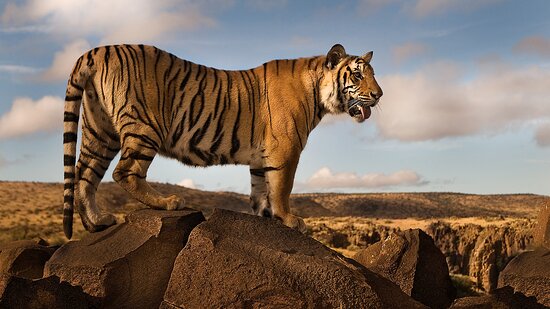

Tiger sighting in the wild is a lifelong dream for many wildlife enthusiasts. Every wildlife photographer’s dream is to photograph or film a tiger once. Clicking a good photograph of a wild tiger raises the difficulty level. It necessitates a great deal of knowledge, talent, intuition, as well as a great deal of planning and luck.
Wildlife photographers UK can teach you how to make the most of your space, time, and shooting opportunities while on safari on a big cat photography mission to help you improve your unique nature photography skills.
Helpful Gears For Photographing Tiger
There isn’t even enough room for a tripod in some safari vehicles. If you can quickly reduce and increase your height, you may want to bring a monopod. If you take the time to plan your shots, beanbags can be effective. Gimbals can also be effective at times. If you have prime and VR lenses, you must do everything in your power to get some good shots.
Manage To Capture At The Right Moment
The best suggestion for finding the ideal shot is to ensure your camera is set to the highest frame rate possible. This enables you to increase the number of photos your camera can take per second. Getting the timing right while photographing is critical, and a large photo count is a secret ingredient.
Try To Include Context
Some of the best photographs narrate a tale. What is the photograph’s story? Is it an animal by itself or an animal in a vast savanna with a vehicle? Adding context to your photographs allows you to capture unique shots. True, not all of your photos should include people or trucks, but capturing a few of these captivating storytelling photos is an essential part of your safari photo portfolio.
Try To Capture Shots Of Silhouetted Animals
Photographs of silhouetted animals can be spectacular. Using exposure compensation to shot darken animal photos so that the subject animal is darkened while the rest of the scene remains somewhat well-exposed can produce extraordinary results. To get this effect, you don’t need to be in the twilight; you need to recognize high contrast lighting conditions and get comfortable with your exposure compensation.
Zoom Out
Yes, big photos are great, but chances are you’ll have many opportunities to photograph wildlife at various distances on your photo safari. Use traditional compositional rules such as the rule of thirds, the golden ratio, or leading lines, and include the animal in your scene.
Photograph In A Stationary Vehicle
Because your pictures will be blurry and out of focus, you can avoid image shake by turning off the vehicle. There is also no sound, and the Tiger is at ease with the absence of sound and the distance you provide.
Take Low Angle Shots
To achieve the bokeh effect in shots, go as low as possible within the vehicle. It is advantageous to have a lean body frame for this.
Last but not least, you never know what will turn out to be the worst, so you must be able to roll with the punches.




